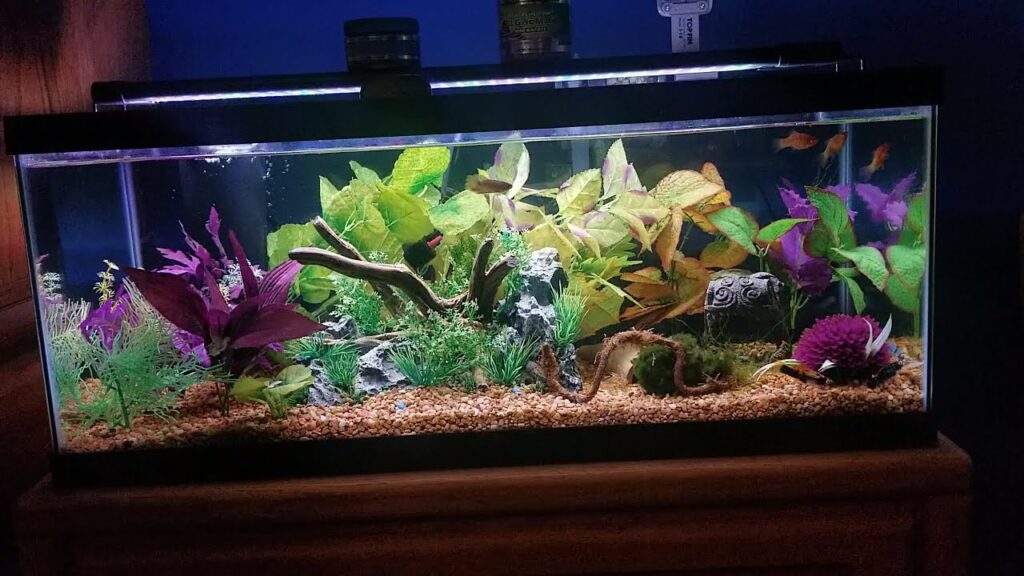Understanding the Size of a 20-Gallon Tank
A 20-gallon tank is a popular choice for both novice and experienced aquarium enthusiasts. It is versatile and can be used for various types of aquatic life, including fish, plants, and even reptiles. Understanding the dimensions, weight, and capacity of a 20-gallon tank is crucial for anyone considering this size for their home or office.
Dimensions
The dimensions of a 20-gallon tank can vary slightly depending on the style (long or high), but the standard measurements are as follows:
- 20 Gallon High Tank:
- Dimensions: 24 inches (length) x 12 inches (width) x 16 inches (height)
- 20 Gallon Long Tank:
- Dimensions: 30 inches (length) x 12 inches (width) x 12 inches (height)
These dimensions indicate that a 20-gallon tank provides a moderate amount of space for aquatic life, making it suitable for a variety of setups.
Weight
When filled with water, a 20-gallon tank can be quite heavy. The weight of water is approximately 8.34 pounds per gallon. Therefore, a filled 20-gallon tank weighs about:
- Weight Calculation:
- Water Weight: 20 gallons x 8.34 pounds/gallon = 166.8 pounds
- Total Weight (including tank): Approximately 225 pounds (including substrate and decorations)
This weight consideration is essential when deciding where to place the tank, as it requires a sturdy surface capable of supporting this load.
Setting Up Your 20-Gallon Tank
Setting up a 20-gallon tank involves several steps to create a healthy environment for your aquatic life. Here’s a detailed guide to help you through the process.
1. Choosing the Right Location
- Surface Strength: Ensure that the surface where you place the tank can support its weight when filled. A sturdy stand designed for aquariums is ideal.
- Accessibility: Choose a location that is easily accessible for maintenance and observation.
- Lighting: Avoid placing the tank in direct sunlight to prevent excessive algae growth and temperature fluctuations.
2. Selecting Equipment
- Filter: A quality filtration system is essential for maintaining water quality. For a 20-gallon tank, a hang-on-back (HOB) filter or a canister filter is often recommended. Look for a filter rated for at least 20 gallons.
- Heater: If you plan to keep tropical fish, a submersible heater will be necessary. A 50-watt heater is typically sufficient for a 20-gallon tank.
- Lighting: LED lights are energy-efficient and provide adequate illumination for both fish and plants. The lighting should be on for about 10-12 hours a day.
3. Adding Substrate
- Types of Substrate: Choose a substrate based on the species you plan to keep. For planted tanks, consider using a nutrient-rich substrate. For fish-only tanks, gravel or sand can work well.
- Depth: A substrate depth of 1-2 inches is generally sufficient for most setups. Ensure it is evenly distributed across the bottom of the tank.
4. Aquascaping
- Decorations: Use rocks, driftwood, and plants to create a natural environment. Ensure that any decorations are aquarium-safe and free of sharp edges.
- Plants: Live plants can help improve water quality and provide hiding spots for fish. Consider low-maintenance plants like Java fern, Anubias, or Amazon swords.
5. Filling the Tank
- Water: Use dechlorinated water to fill the tank. You can treat tap water with a water conditioner to remove harmful chemicals.
- Temperature: Ensure the water temperature is appropriate for the species you plan to keep (typically between 75°F and 80°F for tropical fish).
Cycling Your 20-Gallon Tank
What is Cycling?
Cycling is the process of establishing beneficial bacteria in your aquarium that convert harmful ammonia from fish waste into less harmful nitrites and then into nitrates. This process is crucial for maintaining a healthy environment for your fish.
Methods of Cycling
- Fishless Cycling:
- Add ammonia to the tank to simulate fish waste. This can be done using pure ammonia or by adding fish food. Monitor ammonia, nitrite, and nitrate levels using a test kit.
- Fish-in Cycling:
- Introduce a few hardy fish to the tank. This method is riskier as it can expose fish to harmful ammonia levels. Regular water changes are necessary to keep ammonia levels low.
Information Table
| Tank Type | Dimensions (L x W x H) | Empty Weight | Filled Weight |
|---|---|---|---|
| 20 Gallon High | 24″ x 12″ x 16″ | 25 lbs | 225 lbs |
| 20 Gallon Long | 30″ x 12″ x 12″ | 25 lbs | 225 lbs |
FAQ Section
1. What is the difference between a 20-gallon high and a 20-gallon long tank?
- The primary difference lies in their dimensions. The high tank is taller and shorter in length, while the long tank is longer and shorter in height. This affects not only the aesthetic but also the type of aquatic life that can be comfortably housed.
2. How many fish can I keep in a 20-gallon tank?
- The number of fish depends on the species and their adult size. A general rule is one inch of fish per gallon of water, but this can vary based on the fish’s bioload and compatibility.
3. What are the benefits of a 20-gallon tank?
- A 20-gallon tank is manageable for beginners, provides enough space for a variety of fish, and allows for more stable water conditions compared to smaller tanks.
4. What equipment do I need for a 20-gallon tank?
- Essential equipment includes a filter, heater, substrate, lighting, and decorations. A good filtration system is crucial for maintaining water quality.
5. How often should I change the water in a 20-gallon tank?
- Regular water changes of 10-20% weekly are recommended to maintain water quality and remove toxins.
6. Can I use a 20-gallon tank for reptiles?
- Yes, many reptiles, such as leopard geckos, can thrive in a 20-gallon tank. Ensure proper heating, humidity, and substrate suitable for the species.
7. What is the best substrate for a 20-gallon fish tank?
- The best substrate depends on the type of fish and plants. Common options include gravel, sand, or specialized substrates for planted tanks.
8. How do I cycle a 20-gallon tank?
- Cycling involves establishing beneficial bacteria to break down waste. This can be done through fishless cycling or by adding a few hardy fish to help establish the cycle.
9. What types of fish are suitable for a 20-gallon tank?
- Suitable fish include bettas, guppies, tetras, and corydoras. Always research compatibility and tank requirements before stocking.
10. Where can I find more information about aquarium sizes?
- For detailed information about aquarium sizes and specifications, you can refer to the Wikipedia page on Aquariums.
Conclusion
A 20-gallon tank is an excellent choice for both beginners and experienced aquarists. Its manageable size, combined with the ability to house a variety of aquatic life, makes it a popular option. Understanding its dimensions, weight, and requirements can help ensure a successful and enjoyable aquarium experience.



